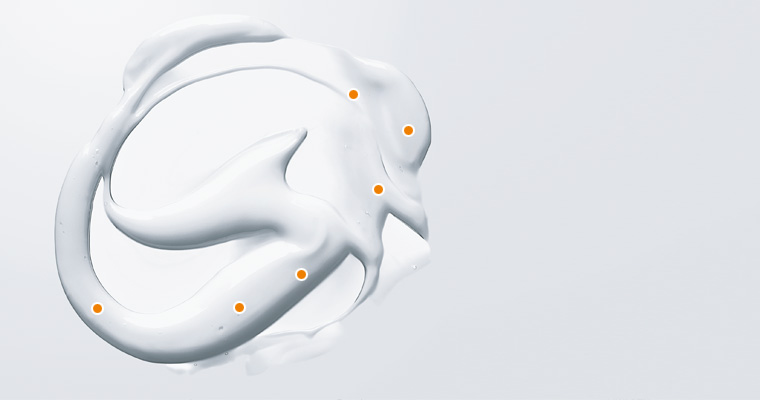We are exposed to financial risks from ongoing operations and financing. We define financial risks as credit, market-price, financing and liquidity risks. Different WACKER departments are responsible for controlling these risks. We employ primary and derivative financial instruments to cover and control the financial needs and risks necessitated by our operations. Such financial instruments are not to be used unless they are based on actual or planned operational business.
A credit risk arises whenever a customer or business partner does not fulfill their contractually agreed obligations. In essence, trade receivables are then at risk. We lower the risk by demanding sufficient collateral to cover the nature and extent of the product/service provided. Collateral includes retention of title. Other preventive measures range from references and credit checks, to the evaluation of historical data from our business relationship to date (particularly payment behavior). In addition, we take out credit insurance to minimize the risk of default.
Credit risks from other contractual obligations are posed by other financial assets, current banking assets, and derivative financial instruments. Our Corporate Finance department centrally conducts global dealings with currency-exchange and interest derivatives, and handles liquidity management. Cash investments and derivative dealings are limited to banks with a minimum rating of A from Standard & Poor’s or a comparable rating agency. Investment activities are additionally subject to maximum investment and term limits. In exceptional cases, investments or derivative dealings may be conducted with banks of lower creditworthiness within tight limits and terms. We expect these policies to minimize our risk concentration.
| download table |
|
Controlling Financial Risks |
| |
|
Risk |
Corporate Department Responsible | |
|
|
| |
|
Credit risks |
Corporate Finance | |
|
Market-price risks |
Corporate Finance | |
|
Liquidity risks |
Corporate Finance | |
|
Exchange/interest-rate risks |
Corporate Finance | |
|
Raw-material price risks |
Raw Materials Procurement |
WACKER is exposed to market-price risks and risks stemming from payment-flow fluctuations. These include currency-exchange, interest-rate and raw-material-price risks. Currency-exchange risks primarily arise from exchange-rate shifts for receivables, liabilities, cash and cash equivalents that are not held in euros. WACKER hedges the resultant net exposure via derivative financial instruments. We use currency-option and forward-exchange contracts and foreign-exchange swaps. Foreign currencies are hedged predominantly for the US dollar, Japanese yen and Singapore dollar. Plus, we counter exchange-rate risks via our local production sites. Interest-rate risks arise due to changes in market rates that impact future interest payments for variable-rate loans and investments. Thus, the changes have a direct influence on the Group’s liquid assets and financial position. The use of derivatives for interest-rate hedging is governed by our interest-rate regulation. When an exposure is identified, interest-rate hedging is performed predominantly for the euro and the US dollar. The use of derivative financial instruments is governed by internal regulations that separate trading and settlement functions and require strict controls within the entire processing procedure.
Liquidity risk (i.e. inadequate cash to meet our existing or future financial obligations) is managed centrally at WACKER. Our Corporate Finance department employs efficient systems to control both cash management and rolling liquidity planning. To counter financing risks, we hold sufficient credit lines and long-term promissory note bonds. As per the reporting date, our cash and cash equivalents amounted to €363.6 million, and we had unused credit lines of some €940 million. In 2009, WACKER increased its net financial liabilities by €109.0 million. We consider the probability of financing and liquidity risks actually occurring to be low. At the moment, we see no risks relating to financial-covenant infringements.
Pension obligations also entail risks due not only to the higher average life expectancy of pension-fund beneficiaries, but also to additional commitments from pension payment increases. The majority of WACKER’s pension guarantees are covered by the Wacker Chemie VVaG pension fund, by pension-related funds and special-purpose assets, and by insurance plans. The largest contribution is made by the Wacker Chemie VVaG pension fund. It manages the pension insurance of our German-based employees in accordance with its Articles of Association and General Terms and Conditions of Insurance. The pension fund’s investments are exposed to general capital-market risks. To limit these risks, the fund diversifies its investment portfolio among various asset classes and regions. As part of its asset-liability management, the pension fund controls and optimizes all asset items to attain the required return within specified risk limits. As one of the fund’s sponsoring entities, WACKER makes payments to it to ensure sufficient coverage for pension obligations. In 2009, WACKER recognized an extraordinary addition to pension provisions of about €47.9 million to reflect the higher life expectancy of pension beneficiaries.
Pension Provisions Increased due to Beneficiaries’ Higher Life Expectancy






